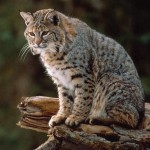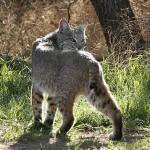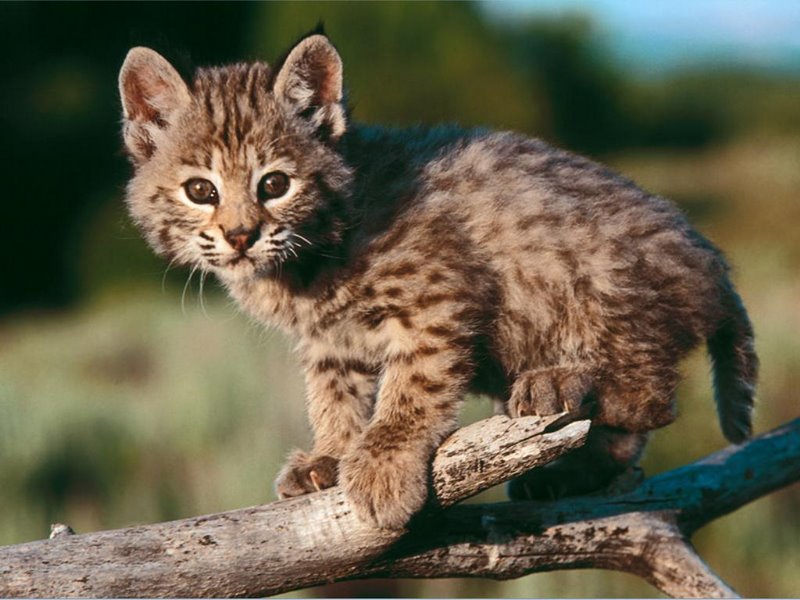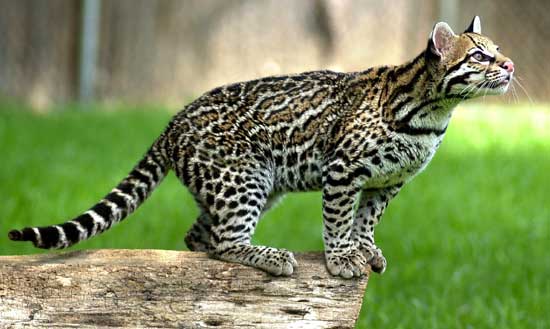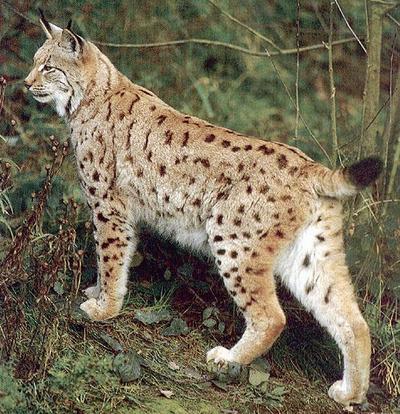Bobcat Description – The bobcat (Lynx rufus) is a medium-sized, reddish brown, yellow-tan, or grayish cat with faint dark spots whose color varies greatly with the habitat in which it occupies. Its ears usually have small tufts at the tips, and its fur is longer on the sides of its head than on the rest of its body. Bobcats have a short tail (hence the name, as in bobbed-tail), long legs, and large feet. The bobcat is highly adaptable and inhabits almost every wooded or brushed area throughout the United States.
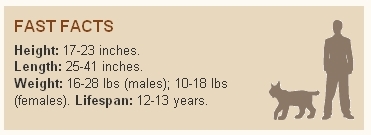
Bobcat Diet – Bobcats primarily hunt rabbits and rodents, but they are also known to eat birds, bats and the occasional deer fawn or young pig. Bobcats can sometimes cause problems around rural and suburban farms, where they will kill and consume small goats, sheep, chickens, and turkeys.
Bobcat Behavior – Bobcat habitat varies greatly from forests to semi-deserts and brush land to mountain-dominated areas. A habitat dense with vegetation and lots of mice and rabbits is perfect for this medium-sized cat. Bobcat are excellent hunters, stalking prey with stealth and patience, then capturing their meals in the blink of an eye
Bobcat are territorial animals and usually live solitary lives. In fact, females will never share a territory with each other. Male territories, on the other hand, tend to overlap. These territories are established with scent markings and territory sizes are extremely varied based on habitat and terrain. Bobcat home range sizes usually range from 15 to 30 square miles for males and about 5 square miles for females.
Bobcat Reproduction – Bobcats typically mate during the winter each year and kittens are usually born in early spring. Although this time of year is when most bobcat mating takes place, they can mate throughout the year. Bobcat gestation ranges from 50 to 60 days in length and litter sizes can be from 1 to 6 kittens. The kittens will begin eating solid food at around 2 months of age. When they are between 8 and 11 months, the mother will push the kittens out of her territory.
Each bobcat may have several dens, one main den and several auxiliary dens, within its home range and territory. A bobcat’s main den is typically a cave or rock shelter, but can be a hollow log, fallen tree, or some other protected place in level terrain. Bobcat will also have shelter dens located in less-visited portions of their home range. These auxiliary dens are often brush piles, rock ledges or stumps.
More on Bobcats:
“The reclusive bobcat is active largely at night, although they frequently leave cover and begin hunting long before sundown. In hilly country, their presence can often be detected by their habit of dropping their feces on large rocks on promontories or ridges. Also, like the mountain lion, the males make scrapes–small piles of leaves, sticks, and so forth on which they urinate–along their travel routes, but these scrapes are smaller. Mock scrapes can be used against these animals for persons interested in trapping bobcat.
They den in crevices in canyon walls, in boulder piles, or in thickets. The dens can be readily recognized by the strong odor emanating from them. An expert at climbing trees, bobcats seek refuge in them when available.”
